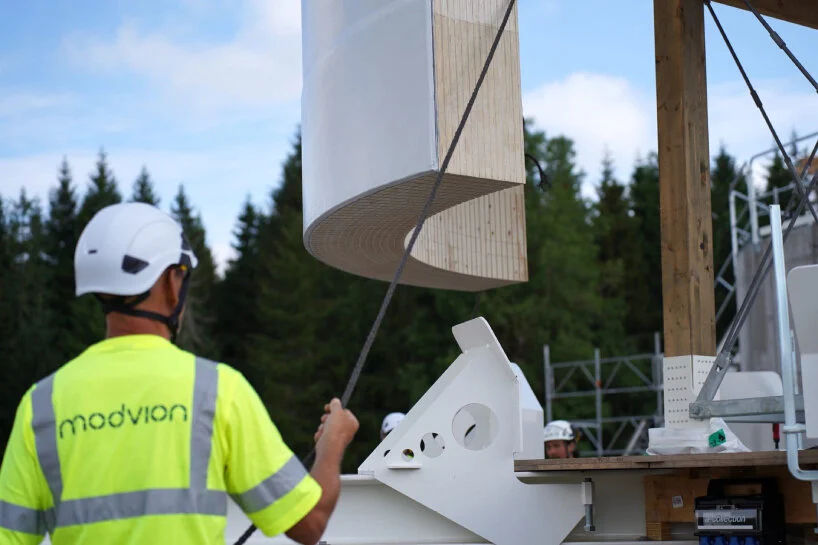
Photo by MODIVON
Published on: Dec 28, 2023
In a revolutionary move, Modvion, a Swedish startup, has constructed the world's tallest wooden turbine tower, presenting a novel approach to wind energy. Nestled near Gothenburg, this 150-meter-high turbine, powered by a 2-megawatt generator, is providing electricity to approximately 400 homes, marking a significant stride in renewable energy sources.
The use of wood in constructing wind turbines, as envisioned by Modvion's CEO Otto Lundman, could be a game-changer in the industry. Typically, wind turbines are made of steel, a material known for its strength and durability, enabling the construction of massive turbines both onshore and offshore. However, steel turbines face transportation challenges due to their large sizes, especially for land projects. This is where wooden turbines, like Modvion's, offer a viable solution.
Modvion's turbine stands out for its innovative design. The tower is composed of 144 layers of laminated veneer lumber, made from spruce wood. This structure ensures both strength and flexibility. Unlike steel, the wooden structure allows for modular construction, meaning that the tower can be built in smaller, easily transportable segments. This modularity is crucial for constructing taller turbines and transporting them to challenging locations.
The sustainability aspect of wooden turbines is equally compelling. Producing steel for turbines typically involves high CO2 emissions due to the use of fossil fuels. In contrast, wooden turbines have a negative carbon footprint since the trees used absorb CO2 from the atmosphere during their growth. About 200 trees, primarily spruce (used for Christmas trees), were harvested sustainably for Modvion's turbine, ensuring that more trees are planted in their place.
The potential of wooden turbines is recognized by industry giants, with companies like Vestas showing interest in this sustainable and economically viable solution. Furthermore, using wood instead of steel not only addresses the transport bottleneck but also enhances the turbines' environmental footprint.
Modvion's pioneering wooden turbine presents a significant step forward in renewable energy technology. The company aims to build an even taller turbine shortly and plans to produce 100 wooden modular turbines annually by 2027. Their goal is for wooden turbines to comprise 10% of the 20,000 turbines installed yearly worldwide within a decade.
This innovative approach demonstrates the evolving landscape of renewable energy, where sustainable materials and efficient design are key to advancing the industry and reducing our carbon footprint.